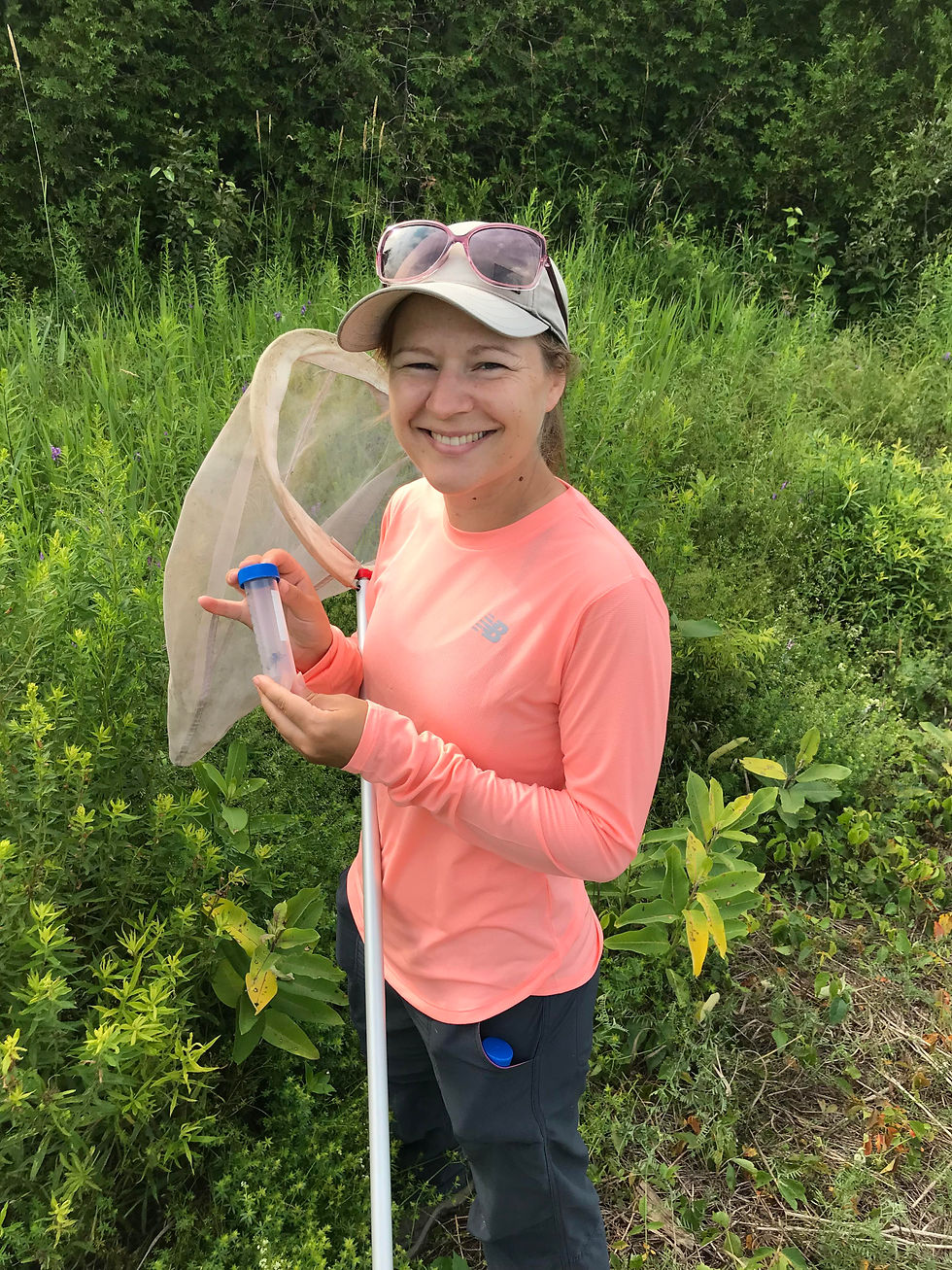Tick Prevention in the Muskrat Watershed
- Muskrat Watershed Council

- Jun 19, 2020
- 3 min read
Summer is finally here and with it comes a sometimes overlooked tiny 8-legged creature. Even though Renfrew County is not considered a high-risk area for ticks and Lyme disease when compared to other parts of Ontario, it is still important to be alert and aware when out enjoying the great outdoors.
In Ontario, tick season usually begins in March and ends in November, whenever temperatures are around or above 4C. All ticks follow a 4-step life cycle ranging from 1-3 years. For a tick to progress to the next stage of its life cycle it must first feed on a host. The stages that pose the highest risk to humans and pets is the nymph and adult stage of a tick’s life. Ticks’ size and colour vary from species-to-species and will change depending on its life cycle stage. In the case of black-legged ticks (the species most likely to transfer Lyme disease in Ontario), the nymph is the size of a poppy seed while the adult tick is not much bigger, ranging around the size of a sesame seed.

Studies have shown that ticks are capable of detecting a host by their breath, body odour, body heat, perspiration and vibrations made when walking. Contrary to popular belief, ticks cannot jump or fly. In order for a tick to attach itself to a potential host, it preforms something called “questing”. This is when a tick will perch itself at the end of a blade of grass or leaf with two legs outstretched in hopes that it can grab onto the host as it passes by. The tick will then have to find a spot on its newfound host to begin feeding. The most common spots to find ticks are around the neck, ears, ankles, wrists, armpits, behind the knees and groin. Due to a tick’s small size, a tick bite is rarely felt. Ticks can feed on a host for several days.
Tick Bite Prevention
No matter the species of tick, it is always important to be aware of the potential diseases they can carry and take preventative steps before heading outside. Ticks are most known to carry the bacteria that cause Lyme disease, but they can also carry other bacteria, as well that cause different infections. Some of these include Southern Tick-Associated Rash Illness, Rocky Mountain Spotted Fever, Tularemia, and Ehrlichia.
Preventative Ways to Reduce the Risk of Being Bitten by a Tick
Be aware of potential tick habitat. Ticks prefer wooded or tall-grassed areas.
Stay on groomed hiking trails as much as possible.
When spending time in areas where ticks could be present, wear long-sleeve shirts, closed toed shoes and pants.
Tuck shirt into pants and pant legs into socks to limit a tick’s access point
Use insect repellents that contain Deet (minimum of 20%) or Icaridin.
Perform a tick check, take a shower/bathe and throw clothing into the dryer for 10 mins as soon as possible after leaving outdoor areas.
Steps to Take if Bitten by a Tick
Remove a tick as soon as it is discovered.
Using clean tweezers, grasp the tick as close to the skin as possible.*
Pull slowly in a straight motion, do not twist or overly squeeze the tick.
Ensure that all parts of the tick’s head are removed as best as possible.
Wash bite zone with soap and water or alcohol-based sanitizer.
Place tick in a closed container and notify your family doctor immediately.
*If you are not comfortable with removing ticks with tweezers you can purchase a tick remover here
Lyme Disease
If caught, early Lyme disease is treatable with antibiotics. That is why it is so important to get tested as soon as the tick is removed or when initial symptoms begin to appear. Symptoms can occur anywhere between from 3 to 30 days of the initial bite.
Initial Lyme Disease Symptoms Include:
Rash (often in the shape of a bullseye)
Chills
Fever
Headache
Fatigue
Aching muscles and joints
Swollen lymph nodes
If Left Untreated, More Severe Symptoms Include:
Severe headaches
New skin rashes
Facial paralysis
Irregular heartbeat
Joint pain
Dizziness
Mental confusion or inability to think clearly
Memory loss
Nerve pain
Numbness or tingling in the hands or feet
Do not let the fear of ticks and what they might carry discourage you from getting outside this summer and enjoying the outdoors. Following the simple preventative measures listed above will enable you to have a stress free outdoor experience with your friends and family.
Sources:





Comments